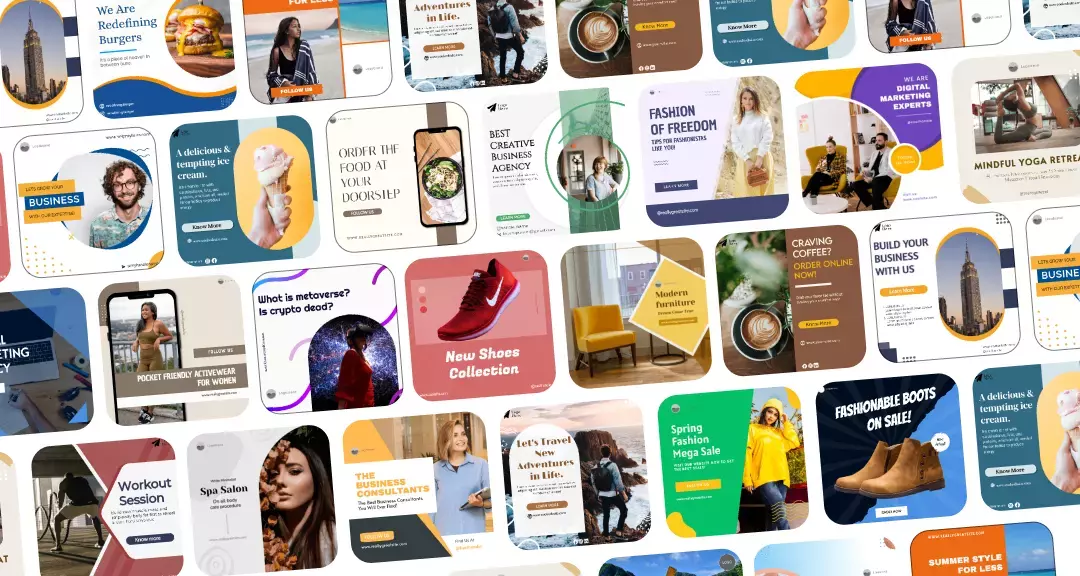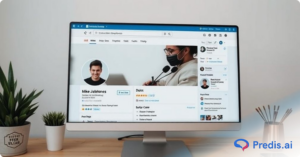In a world where attention spans are shrinking and ad costs keep rising, creative performance has become the deciding factor in marketing ROI. But with so many formats, audiences, and channels to manage, it’s nearly impossible to manually tailor every ad.
That’s where Dynamic Creative Optimization (DCO) steps in, the technology that’s reshaping how brands, agencies, and creators deliver personalized ad experiences at scale.
According to Statista, global digital advertising spending is expected to reach US$1.17tn by 2025, with a major chunk powered by programmatic and dynamic ad formats. If your creatives aren’t optimized dynamically, you’re leaving performance and profit on the table.
In this guide, you’ll learn what DCO is, how it works, where to use it, which tools to try, and how AI platforms like Predis.ai make DCO-style automation accessible to everyone, from small creators to global brands.
What Is Dynamic Creative Optimization (DCO)?
Dynamic Creative Optimization (DCO) is a form of programmatic advertising that automatically customizes ad creatives in real time based on audience data.
In simple terms, DCO uses algorithms to mix and match different creative elements like headlines, images, product visuals, CTAs, and descriptions to deliver the most relevant version of an ad to each user.
For example:
A fashion retailer may show one user an ad for sneakers in their favorite color, while another sees a handbag ad highlighting a discount, all from the same campaign. The system learns what performs best and optimizes accordingly.
Think of it as an evolution of “A/B testing” on steroids, where hundreds of creative combinations are tested and personalized automatically.
DCO vs Static vs Dynamic Ads
| Type | Description | Personalization Level |
|---|---|---|
| Static Ads | One creative for all viewers | ❌ None |
| Dynamic Ads | Pulls product info or prices dynamically | ⚙️ Limited (rules-based) |
| Dynamic Creative Optimization (DCO) | AI/algorithm tests multiple creative versions in real-time and adapts | ✅ High (data-driven personalization) |
In short: Static creatives show; DCO learns, adapts, and converts.

Why DCO Matters in 2025?
The digital ad space is more competitive and fragmented than ever. Marketers face two major challenges:
- Ad fatigue caused by repetitive messaging
- The pressure to deliver personalized content across devices and demographics
DCO solves both.
According to Think with Google, personalized ads drive up to 3x higher engagement and conversion rates. By letting AI decide which ad variant to show, DCO ensures your audience sees the right message at the right time without manual guesswork.
Key Benefits of DCO
- Personalization at Scale: Automatically adapts creatives for geography, behavior, and device type.
- Improved ROI: The system continuously learns what performs best and allocates impressions intelligently.
- Higher Relevance: Viewers get context-aware messages, increasing click-through and engagement.
- Reduced Creative Fatigue: The system rotates fresh combinations to keep ads engaging longer.
- Faster Optimization Cycles: Real-time feedback means faster learnings and better decision-making.
For creators and small teams, tools like Predis.ai bring this optimization philosophy into content creation. Helping automate visuals, captions, and scheduling, even if you’re not running a full programmatic stack.
How Does Dynamic Creative Optimization Work?
At its core, DCO is a blend of data, logic, and creative assets. Here’s how it works step by step:
- Data Inputs:
Information such as demographics, location, browsing behavior, device type, and stage in the funnel is collected. - Creative Components:
You upload multiple versions of each asset (headlines, images, videos, CTAs, colors, etc.). - Dynamic Assembly:
The DCO engine combines these components into ad variations dynamically – guided by pre-set rules or AI models. - Real-Time Decisioning:
As the campaign runs, algorithms analyze which combinations perform best and deliver those variants more often. - Continuous Optimization:
The engine learns from performance data and automatically improves creative effectiveness over time.

Example: How to Use Dynamic Creative Optimization in E-Commerce?
Imagine you’re running an online fashion store:
- You upload product feeds, multiple taglines, and CTAs.
- The DCO system automatically creates combinations – e.g., “Shop Summer Sneakers” + 20% Off + blue image for one user, and “Fresh Streetwear Drops” for another.
- As the campaign runs, it identifies which images, copy, and offers convert best, adjusting future ad impressions automatically.
This principle also applies beyond paid ads. Platforms like Predis.ai leverage similar logic to generate ad-ready product videos and social posts using AI – a DCO-style approach for organic and paid content creation.
Real-World Use Cases & Applications of DCO (with Examples)
DCO isn’t just for enterprise marketers. Its applications now span multiple industries and creator workflows.
1. E-Commerce
Retailers dynamically showcase:
- Products relevant to a visitor’s browsing or purchase history
- Price or stock updates in real time
- Region-specific offers or shipping info
Example: An ad promoting “Winter Jackets – 25% Off in Chicago” only shows to users in that location.
2. Travel & Hospitality
Travel brands use DCO to:
- Display live flight or hotel deals
- Personalize based on origin city or browsing behavior
- Promote last-minute offers during peak booking periods
Example: A user searching “Paris vacations” on Google sees an ad showing “Save 20% on Hotels Near Eiffel Tower”.
3. Content Creators & UGC Ads
Creators can adopt the DCO mindset too. Instead of running one static ad, they can test multiple versions of:
- Hooks
- Visual styles
- CTAs and hashtags
Platforms like Predis.ai UGC Ad Maker help creators automate this, building high-performing variations in minutes, then posting or testing what works best.
4. Agencies & Global Brands
For large teams managing multiple markets:
- DCO handles language, currency, and local offers automatically.
- Ensures brand consistency while tailoring creatives regionally.
- Integrates seamlessly with DSPs and ad servers.
Best Dynamic Creative Optimization Tools
When exploring DCO tools, look for these core capabilities:
| DCO Feature | Why It Matters |
|---|---|
| Asset Management | Easily upload and tag creative components for testing |
| Data Integration | Connects to your CRM, analytics, or DSP |
| Creative Assembly Logic | Rules-based or AI-driven personalization |
| Reporting & Insights | Performance by asset and audience segment |
| Cross-Channel Deployment | Works across display, video, and social |
Top Tools to Explore
- Google Marketing Platform (Studio + DV360) – Enterprise-level solution integrated with the Google Ads ecosystem.
- Criteo DCO – Great for retail and remarketing campaigns.
- Ad-Lib.io – Cloud-based creative automation for agencies.
- Smartly.io – Social-first DCO platform focusing on paid social ads.
- Predis.ai – AI-powered creative platform enabling DCO-style automation for social media and ad creatives.
- Auto-generates multiple creative variations from one input.
- Helps teams plan and schedule optimized content via its inbuilt scheduler.
- Perfect for small businesses, creators, and e-commerce brands seeking personalization without complexity.
📌 Pro Tip: Pair DCO tools with analytics platforms (like GA4 or Meta Ads Manager) to map which creative variables influence conversion rates the most.

Challenges & Considerations for DCO
Despite its benefits, DCO requires thoughtful execution. Here’s what to watch out for:
- Data Quality & Privacy
Poor or incomplete data leads to irrelevant personalization.
👉 Use first-party data and maintain transparency with consent mechanisms. - Creative Production Volume
DCO thrives on variation. Without enough creative assets, results stagnate.
👉 Tools like Predis.ai solve this by generating multiple creatives from a single idea. - Over-Automation Risks
Too much reliance on algorithms can produce repetitive or off-brand outputs.
👉 Always combine machine learning with human creativity. - Measurement Complexity
Attribution can get tricky when multiple variables are in play.
👉 Define KPIs clearly – clicks, conversions, CTR lift, etc. - Budget & Team Constraints
Not every brand has enterprise resources.
👉 Start small – use AI-driven content creation and testing tools to simulate DCO principles affordably.
Conclusion
Dynamic Creative Optimization isn’t just another ad-tech buzzword, it’s the bridge between creativity and data. By combining automation with strategic storytelling, DCO enables hyper-personalized ad experiences that scale effortlessly.
Whether you’re an agency managing global campaigns or a solo creator experimenting with UGC ads, adopting a DCO mindset can dramatically improve your content performance.
Start small. Test variations. Let data guide your creativity.
👉 Explore how Predis.ai helps brands and creators create, test, and optimize ad content faster – through AI-powered automation, dynamic visuals, and smart scheduling. For product-based businesses, tools like the UGC Ad Maker and Ecommerce Video Maker bring the power of DCO to your content strategy – no coding, no manual editing, just smarter creative optimization. Sign up now for a free trial.
FAQs: Dynamic Creative Optimization (DCO)
Dynamic Creative Optimization is a technology that automatically customizes ad creatives based on real-time data such as location, behavior, and interests – ensuring each viewer sees the most relevant version of an ad.
DCO systems combine multiple creative elements (images, headlines, CTAs) using algorithms that test performance and automatically deliver the best-performing versions to specific audiences.
While dynamic ads use product feeds or templates, DCO actively tests, learns, and optimizes creative combinations in real time – delivering ongoing performance improvements.
Start by identifying your key audience segments, preparing multiple creative assets, and using a platform (like Predis.ai or a DSP) that supports testing and optimization logic.
It enables personalization without heavy lifting – letting AI adjust your creatives for higher engagement and better ROI.
Tools like Google Studio, Criteo, Smartly.io, and Predis.ai are popular options depending on your goals and budget.
Not anymore. With the rise of AI platforms, even small businesses can adopt DCO principles in their creative workflows.
Expect increased use of AI, privacy-first personalization, and automation in both paid and organic creative strategies.















